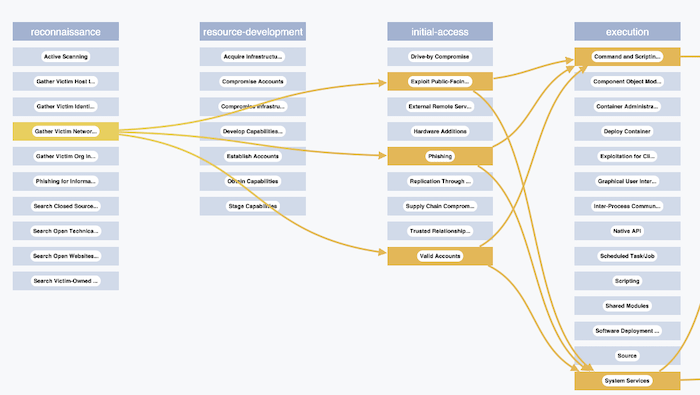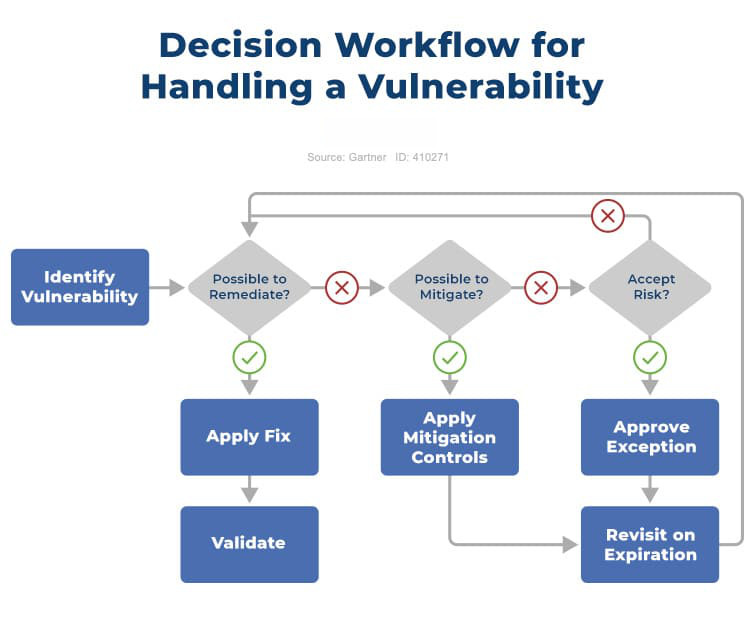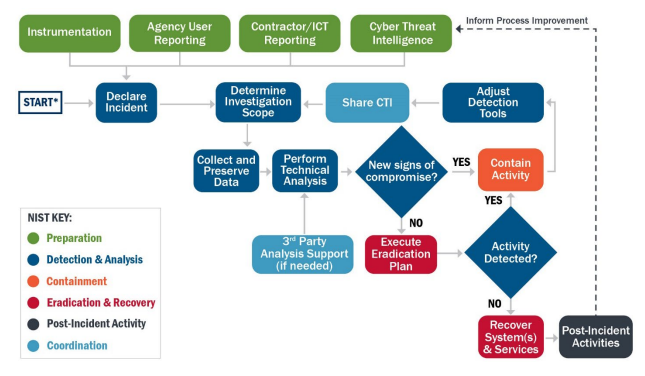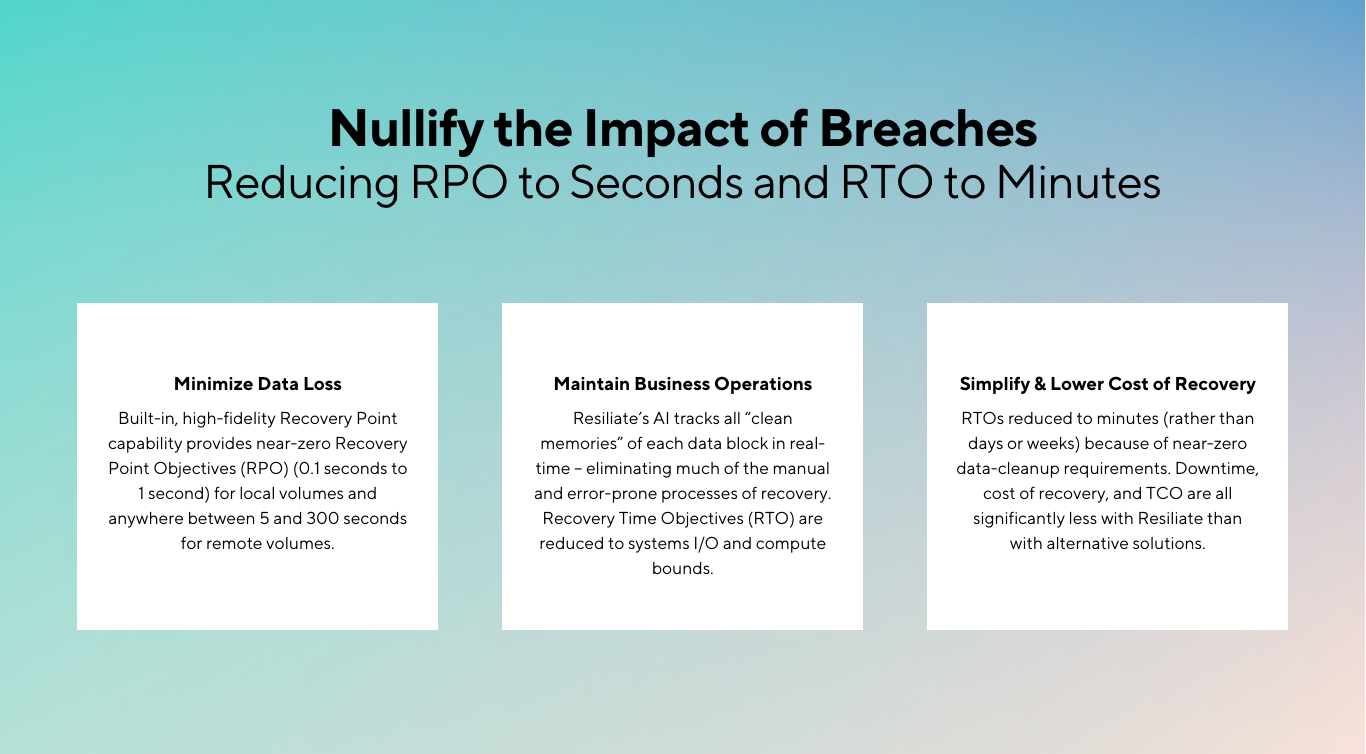
We Never Stop Learning...

Building a Ransomware-Resilient Organization: A Comprehensive Approach
In this blog post, we outline a detailed strategy for ransomware mitigation, encompassing risk assessment, vulnerability management, employee training, incident response planning, and the adoption of advanced security solutions like Saf.ai's Resiliate™.
Introduction:
In today's interconnected world, ransomware has become a pervasive threat, causing significant disruptions and financial losses to organizations of all sizes. To effectively combat this threat, organizations need to adopt a proactive and holistic approach, building resilience from the ground up. If you are part of a cybersecurity team or executive level of a company, this blog post outlines a comprehensive strategy for ransomware mitigation, encompassing risk assessment, vulnerability management, employee training, and incident response planning. Additionally, we offer a better way of actually defending and informing of a ransomware attack and how you can mitigate and return to operations within seconds or minutes vs. days or weeks.

1. Types of Ransomware and Delivery Methods
Ransomware can be categorized into two main types: crypto-ransomware and locker ransomware. Crypto-ransomware encrypts files using strong encryption algorithms, making them inaccessible without the decryption key. Locker ransomware, on the other hand, locks down the victim's device, preventing access to the system entirely.
Common delivery methods for ransomware include:
Phishing emails: Attackers send emails containing malicious attachments or links that, when opened, install ransomware on the victim's device.
Malicious websites: Attackers create websites that contain malicious code designed to infect visiting devices with ransomware.
Infected software downloads: Attackers compromise legitimate software or create fake software installers that, when downloaded and installed, deliver ransomware onto the victim's device.
The Impact of Ransomware Attacks
Ransomware attacks can have devastating consequences for organizations, including:
Data loss: Ransomware encrypts critical data, making it inaccessible to the organization.
Financial losses: Organizations may be forced to pay ransoms to regain access to their data.
Downtime: Ransomware attacks can disrupt business operations, leading to lost productivity and revenue.
Reputational damage: Ransomware attacks can damage an organization's reputation, leading to lost customer trust and business opportunities.
2. A Brief History of Ransomeware
The first documented ransomware attack occurred in 1989 and was known as the "AIDS Trojan." It was created by Joseph Popp, a biology researcher from New Zealand, who distributed it through floppy disks at the 1989 WHO AIDS Conference in Bologna, Italy. The Trojan was disguised as a research paper on AIDS and, when activated, would encrypt the user's files and display a message demanding a payment of $189 to a P.O. box in Panama in exchange for the decryption key.

:Image of the AIDS ransomeware package including letter, envelop and floppy disk
The AIDS Trojan was relatively simple and could be defeated by reformatting the infected computer's hard drive. However, it was significant because it was the first time that ransomware had been used on a large scale. It also demonstrated the potential for ransomware to cause widespread disruption and financial losses.
Here are some additional details about the AIDS Trojan attack:
The Trojan was distributed to over 20,000 people at the WHO AIDS Conference.
The attack caused widespread panic and concern among computer users.
Popp was never arrested or prosecuted for his crime.
The AIDS Trojan attack helped to raise awareness of the threat of ransomware and led to the development of anti-ransomware software.
According to Chainalysis, ransomware attackers extorted at least $456.8 million from victims in 2022. This is a decrease from the $765.6 million extorted in 2021. However, the number of ransomware attacks actually increased in 2022. There were an estimated 493.33 million ransomware attempts worldwide in 2022, up from 312.8 million in 2021.
Here is a summary of ransomware statistics for 2022:
Total ransomware attempts: 493.33 million
Total ransomware payments: $456.8 million
Average cost of a ransomware attack: $4.54 million
Most targeted industries:
Manufacturing: 437 attacks
Food and beverage: 51 attacks
Healthcare: 46 attacks
3. Industry and Regulatory Requirements
Organizations should consider industry-specific regulations and compliance requirements when assessing risks. Compliance frameworks such as the Payment Card Industry Data Security Standard (PCI DSS) and the Health Insurance Portability and Accountability Act (HIPAA) mandate security controls that can help mitigate the risk of ransomware attacks. The MITRE ATT&CK framework can be used to align security controls with these requirements by providing a common language for describing adversary tactics and techniques. This enables organizations to map their security controls to the specific attack vectors covered by the regulations, ensuring comprehensive coverage and compliance.
Benefits of Using MITRE ATT&CK for Compliance:
Using the MITRE ATT&CK framework for compliance offers several benefits:
Improved Threat Understanding: Organizations can gain a deeper understanding of the adversary techniques and tactics used in ransomware attacks, allowing them to tailor their security controls more effectively.
Targeted Remediation: By identifying the specific attack vectors relevant to their industry or regulatory requirements, organizations can focus their remediation efforts on the areas of highest risk.
Demonstrating Compliance: Mapping security controls to the MITRE ATT&CK framework provides organizations with a clear and demonstrable way to show compliance with industry and regulatory requirements.

Image: Visualizing cyber attack techniques in context helps organizations focus on defense strategies
Example of Using MITRE ATT&CK for PCI DSS Compliance:
The PCI DSS requires organizations to protect sensitive cardholder data from unauthorized access, modification, or disclosure. The MITRE ATT&CK framework can be used to identify specific attack vectors that could compromise cardholder data, such as phishing attacks, social engineering, and malware infections. By mapping their security controls to these attack vectors, organizations can ensure they are taking appropriate measures to comply with PCI DSS requirements.
4. Vulnerability Management: Addressing Weaknesses and Patching Gaps
Vulnerability management is a continuous process of identifying, classifying, prioritizing, and remediating vulnerabilities in systems, software, and network configurations. It plays a crucial role in minimizing the attack surface and reducing the likelihood of successful ransomware intrusions.
Vulnerability Identification and Scanning
The first step in vulnerability management involves identifying existing vulnerabilities across the organization's IT infrastructure. This can be achieved through vulnerability scanning tools that automatically scan systems, applications, and network devices for known weaknesses. These tools can identify a wide range of vulnerabilities, including missing patches, misconfigurations, and outdated software.
Vulnerability Classification and Prioritization
Once vulnerabilities have been identified, they need to be classified according to their severity and potential impact. This classification helps prioritize remediation efforts, ensuring that the most critical vulnerabilities are addressed first. Factors to consider when prioritizing vulnerabilities include the likelihood of exploitation, the potential impact on business operations, and the availability of patches or mitigations.
Vulnerability Remediation and Patching
The next step in vulnerability management is to remediate or mitigate identified vulnerabilities. This may involve applying patches, updating software, changing configurations, or implementing additional security controls. Organizations should develop a patching plan that outlines the steps for remediating vulnerabilities, including timelines, communication protocols, and rollback procedures.
Example of Vulnerability Management Process

An example of a vulnerability management process that can be deployed:
Establish a Vulnerability Management Team: Create a dedicated team responsible for overseeing the vulnerability management process, including identifying, classifying, prioritizing, and remediating vulnerabilities.
Implement Vulnerability Scanning Tools: Deploy vulnerability scanning tools that can scan systems, applications, and network devices for known weaknesses. Schedule regular scans to ensure continuous vulnerability identification.
Classify and Prioritize Vulnerabilities: Utilize vulnerability management tools or manual processes to classify identified vulnerabilities based on their severity and potential impact. Prioritize remediation efforts based on the risk posed by each vulnerability.
Develop a Patching Plan: Create a patching plan that outlines the steps for remediating vulnerabilities, including timelines, communication protocols, rollback procedures, and resource allocation.
Remediate and Patch Vulnerabilities: Implement the patching plan to address identified vulnerabilities. Utilize automated patching tools where possible to streamline the remediation process.
Monitor and Verify Remediation: Monitor the patching process to ensure vulnerabilities have been successfully remediated. Verify remediation through follow-up scans or manual checks.
Continuous Monitoring and Improvement
Vulnerability management is an ongoing process that requires continuous monitoring and improvement. Organizations should regularly review their vulnerability management policies, procedures, and tools to ensure they are effective in addressing evolving threats and vulnerabilities. Additionally, organizations should incorporate vulnerability management into their incident response plans to effectively handle ransomware attacks and other cyberattacks.
5. Employee Training: Empowering the Human Firewall
Employees often represent the weakest link in an organization's cybersecurity posture. Human error and lack of awareness are frequently exploited by cybercriminals to gain access to systems and data. Therefore, investing in employee training and awareness is essential to prevent social engineering attacks, which are a common entry point for ransomware.
Significance of Employee Training
Employee training plays a critical role in building a ransomware-resilient organization by:
Raising Awareness: Educating employees about ransomware, its modus operandi, and the potential consequences of falling victim to an attack.
Empowering Detection: Equipping employees with the knowledge and skills to identify and avoid phishing emails, malicious websites, and other social engineering tactics.
Enhancing Reporting: Encouraging employees to promptly report suspicious emails, links, or activities to the IT security team for further investigation.
Key Training Topics
Effective employee training should cover a range of topics, including:
Ransomware Basics: Understanding the nature of ransomware, how it works, and the impact it can have on individuals and organizations.
Phishing Recognition: Identifying phishing emails, malicious websites, and social engineering attempts.
Safe Online Practices: Establishing secure online habits, such as avoiding clicking on links or opening attachments from unknown senders.
Password Management: Creating strong and unique passwords, using multi-factor authentication, and avoiding password reuse.
Incident Reporting Procedures: Understanding the process for reporting suspicious activities or potential ransomware infections to the IT security team.
Specific Example: Employee Phishing and suspicious Links Training
The simplest form of phishing is where an attacker gathers as many emails as they can from the target organization and uses all of them in their attack. This is a “spray-and-pray,” or shotgun approach, focusing on accuracy by volume.
The attacking email will look generic in this case, but it will contain contents that an average user may believe. Especially with the large shift from in-person meetings to Zoom due to COVID-19, a Zoom phishing email may be a good starting place. Below is an example of this type of phishing:

In most cases, by hovering your mouse over the link, you can quickly identify that the destination URL is not from Zoom.
Conduct a Risk Assessment: Assess the organization's vulnerability to phishing attacks, considering factors such as employee demographics, industry-specific threats, and past phishing incidents.
Develop Training Materials: Create or acquire comprehensive training materials that cover phishing identification techniques, common phishing tactics, and safe online practices.
Choose Training Format: Select the most appropriate training format for the organization, such as instructor-led training, online modules, or interactive simulations.
Schedule Training Sessions: Schedule regular training sessions to ensure all employees receive updated training on a periodic basis.
Incorporate Real-World Examples: Use real-world examples of phishing emails, malicious websites, and social engineering campaigns to enhance employee understanding.
Conduct Phishing Simulations: Periodically conduct phishing simulations to test employee awareness and identify areas for improvement.
Provide Ongoing Reminders: Regularly remind employees about phishing threats and safe online practices through newsletters, internal communications, and visual aids.
Encourage Reporting: Emphasize the importance of reporting suspicious emails or links to the IT security team, regardless of their level of certainty.
Measure Training Effectiveness: Regularly assess the effectiveness of the training program through surveys, quizzes, and simulated phishing tests.
Below is an example of a common email phishing (spear phishing) attempt:
By providing comprehensive employee training on phishing and suspicious links, organizations can significantly reduce their vulnerability to ransomware attacks and empower their workforce to act as a vigilant human firewall.
6. Multi-Factor Authentication (MFA): A Robust Defense Against Password Compromises
In today's increasingly interconnected world, passwords serve as the primary gatekeepers to our digital lives, protecting access to personal accounts, sensitive data, and critical systems. However, passwords alone are no longer sufficient to safeguard against the evolving tactics of cybercriminals. In fact, password theft remains one of the most prevalent attack vectors, with data breaches and phishing campaigns constantly exposing user credentials.
Multi-Factor Authentication (MFA) addresses this vulnerability by adding an extra layer of security beyond just passwords. It requires users to present multiple pieces of evidence to verify their identity, making it significantly more difficult for unauthorized individuals to gain access.
CISA Director Jen Easterly discusses enabling MFA
How MFA Works
MFA systems typically involve two or more factors of authentication, which can be categorized into the following types:
Knowledge-based factors: These factors rely on knowledge only the user possesses, such as a password or a PIN.
Possession-based factors: These factors require the user to have a specific device or token, such as a smartphone or a security key.
Inherence-based factors: These factors are based on the user's unique biological or behavioral characteristics, such as fingerprints or facial recognition.
By combining these different factors, MFA significantly increases the complexity of a successful attack. Even if a cybercriminal manages to steal a user's password, they would still need to possess the additional factor, such as the user's smartphone, to gain access to the account.
Benefits of Deploying MFA
MFA offers several compelling benefits for organizations and individuals alike:
Enhanced Security: MFA significantly reduces the risk of unauthorized access to accounts and systems, providing a strong defense against password-based attacks.
Data Protection: By protecting user accounts, MFA safeguards sensitive data from unauthorized access and potential data breaches.
Regulatory Compliance: Many industries and regulatory bodies mandate MFA for access to sensitive data and critical systems.
Reduced Costs: Preventing unauthorized access and data breaches can save organizations significant costs associated with incident response, regulatory fines, and reputational damage.
MFA Deployment Considerations
When deploying MFA, organizations should consider the following factors:
User Experience: Choose MFA methods that are convenient and easy for users to adopt, ensuring minimal disruption to their workflows.
Risk Assessment: Prioritize MFA implementation for high-risk accounts and systems that access sensitive data.
Phased Rollout: Consider a phased rollout to gradually introduce MFA and minimize user disruption.
Ongoing Education and Awareness: Educate users about the importance of MFA and provide training on its usage.
Support and Troubleshooting: Establish clear support channels to assist users with MFA-related issues.
Multi-Factor Authentication has emerged as a critical security measure in today's digital landscape. By adding an extra layer of protection beyond passwords, MFA significantly enhances the security of user accounts, sensitive data, and critical systems. Organizations should prioritize MFA deployment to safeguard their valuable assets and protect themselves from the increasing threat of cyberattacks.
7. Incident Response Planning: Preparing for the Unexpected
In today's interconnected and ever-evolving digital environment, organizations face a constant barrage of cyber threats. Ransomware attacks, data breaches, and other cybersecurity incidents can have devastating consequences, causing financial losses, reputational damage, and operational disruptions. To effectively mitigate these risks, organizations must develop and implement a comprehensive incident response plan.
Purpose of an Incident Response Plan
An incident response plan serves as a roadmap for organizations to effectively detect, respond to, and recover from cybersecurity incidents. It outlines the roles, responsibilities, and procedures that will be followed in the event of an attack, ensuring a coordinated and timely response.
Key Components of an Incident Response Plan
A comprehensive incident response plan typically includes the following components:
Incident Identification and Detection: Establishes methods for identifying and detecting cybersecurity incidents, including monitoring systems, reviewing logs, and receiving reports from employees.
Incident Containment and Eradication: Outlines procedures for isolating the affected systems, preventing further damage, and eradicating the root cause of the incident.
Incident Analysis and Investigation: Defines the process for thoroughly analyzing the incident, gathering evidence, determining its scope and impact, and identifying potential vulnerabilities.
Incident Communication and Reporting: Establishes protocols for communicating the incident internally and externally, including notifying relevant stakeholders, law enforcement, and regulatory bodies.
Incident Recovery and Restoration: Details the steps for restoring affected systems, data, and operations, ensuring business continuity and minimizing downtime.
Incident Post-mortem and Review: Mandates a thorough post-mortem analysis to identify lessons learned, improve incident response procedures, and prevent recurrence.
Sample Incident Response Plan
Here is a simplified example of an incident response plan:
Incident Identification and Detection
Employees are trained to report suspicious activities or potential cybersecurity incidents to the IT security team.
Log management tools are used to monitor system activity and identify anomalies.
Security information and event management (SIEM) systems are deployed to correlate events and detect potential threats.
Incident Containment and Eradication
Upon detection, the affected system is isolated from the network to prevent further damage.
The IT security team investigates the incident to identify the root cause and eradicate the malicious code or exploit.
Affected systems are patched or updated with the latest security fixes.
Incident Analysis and Investigation
A dedicated incident response team is assembled, including representatives from IT security, operations, and legal departments.
The incident is thoroughly analyzed to determine its scope, impact, and potential causes.
Forensic evidence is collected and preserved for potential legal action.
Incident Communication and Reporting
Relevant stakeholders, including senior management, are notified of the incident and kept informed of its progress.
Law enforcement and regulatory bodies are notified if the incident involves a data breach or other legal implications.
Public communication is carefully planned and executed to minimize reputational damage.
Incident Recovery and Restoration
Affected systems are restored to their pre-incident state using backups and disaster recovery procedures.
Data integrity is verified to ensure no critical data was lost or compromised.
Business operations are resumed gradually, with a focus on restoring critical processes and services.
Incident Post-mortem and Review
A thorough post-mortem analysis is conducted to identify lessons learned, assess the effectiveness of the incident response plan, and improve procedures for future incidents.
Vulnerabilities that contributed to the incident are addressed with appropriate security measures.
Incident response drills and simulations are conducted to test the plan and prepare for future incidents.8. It increases SEO

From the Federal Government Incident Response Playbook: http://bit.ly/CISAResponse
Incident response planning is an essential component of an organization's cybersecurity strategy. By proactively preparing for the unexpected, organizations can effectively detect, respond to, and recover from cybersecurity incidents, minimizing their impact on business operations and protecting their valuable assets.
8. Bridging Cybersecurity and Cyber Resilience
The future of ransomware protection that is speeding up the time between incident and recovery is being accomplished with the help of Machine Learning (ML, or AI). Recent innovations for short RTO (Return to Operations) have been made by Saf.ai. With their security file system, Ransomware is all but defeated, and compromised data is returned to operation within seconds to minutes vs. days and weeks. Saf.ai’s product “Resiliate” bridges the gap in your cybersecurity plan to actually restore data quickly to operation.

Resiliate™ is Data-as-an-AI. First Defend. Then Inform.
Data interwoven with its own neural net enables data-centric security that cannot be bypassed (unlike perimeters) - protecting itself against:
unauthorized access and changes
data corruption and destruction
data exfiltration
Data becomes immune to costly cyberattacks, such as ransomware and data theft, as well as human error.
Resiliate™ provides software-defined, zero-trust Security Enclaves for critical systems and complex security policy requirements. It simplifies security operations by providing data-centric CRUD (Create, Read, Update, Delete) authorization, context-sensitive integrity and confidentiality, as well as resilient data availability all in one, unified solution.
Resiliate™ also provides and enables controls from standards such as NIST 800-53R5 (e.g., Resiliate™ enables customers to comply with CMMC 1.0 at up to IL5). It reduces time to resume operations (RTO) and restores any data loss. Provides near-instantaneous rectification of disastrous impact. And provides and enables deeper controls over data leakage and reduces data exfiltration across multiple environments.
If your organization is interested in maximum protection against ransomware attacks, data theft and manipulation and, if a cyber incident such as ransomware does happen to find it's way into your organization, to be able to return to operational status in seconds or minutes vs. days or weeks. Click the button below and schedule a “no-obligation” strategy call. We can provide a Proof of Concept in your environment so you can see, first hand, the power of Resiliate™ in your organization.
Book A "No-Obligation" Strategy Call by Clicking Here
9. Conclusion
Building a ransomware-resilient organization requires a comprehensive approach that encompasses risk assessment, vulnerability management, employee training, incident response planning, and the adoption of advanced security solutions like Saf.ai's Resiliate™. By proactively addressing potential vulnerabilities, empowering employees to act as a vigilant human firewall, and establishing a robust incident response plan, organizations can significantly reduce their risk of falling victim to ransomware attacks. Additionally, implementing data-centric security solutions like Resiliate™ can provide an extra layer of protection, enabling organizations to safeguard their critical data and quickly recover from cyberattacks, minimizing downtime and ensuring business continuity.
